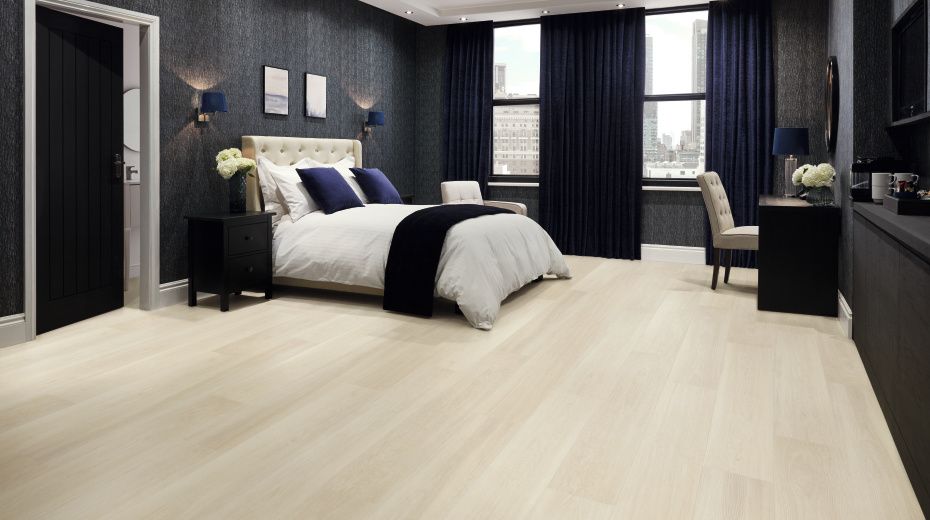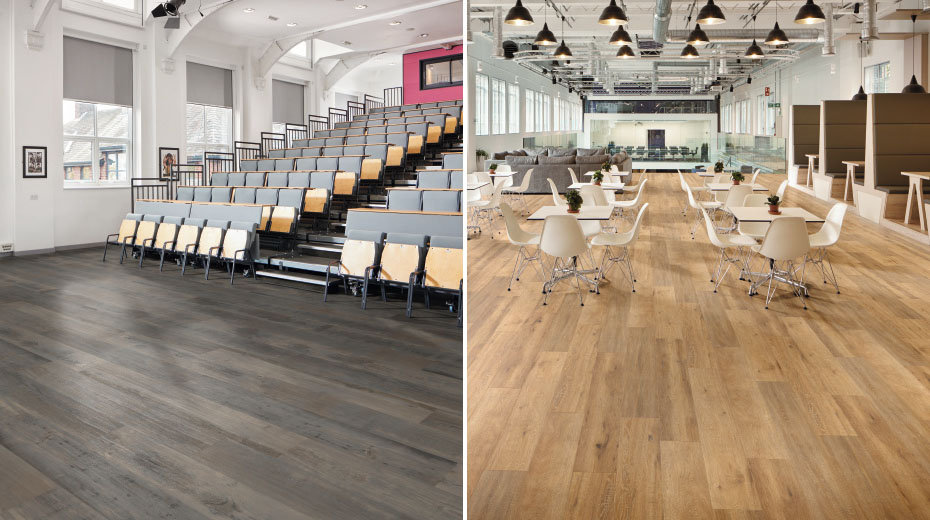While acoustics have always been an important consideration when specifying building materials, with an increased focus on well-being in commercial and residential environments, acoustics have become more important than ever. According to the Center for Disease Control, “continual exposure to noise can cause stress, anxiety, depression, high blood pressure, heart disease and many other health problems;” by specifying materials that alleviate noise, you are not only creating a peaceful environment, but a healthy one as well.

Common Acoustic Terms and Tests of Materials
When specifying materials to alleviate noise and sound transmission, it’s important to understand common measurements and testing standards to ensure you find the products to best fit the needs of the environment. These are just some of the terms and tests you will encounter.
Airborne Sound is voice, radio or TV sound that can be transferred through the structure of the room (including wall studs, dry wall, insulation, fasteners, etc.) and is measured by the Sound Transmission Class (STC) test.
Sound Transmission Class (STC) measures airborne sound transmission. You can achieve noise reduction by using materials with a high STC rating to block some of the sound energy, typically through room finishes like walls and ceilings. Carpet or rugs, furniture and drapes can help absorb airborne sound. Because hard surface flooring is smooth and flat, sound reflects directly off the floor covering, so its ability to influence airborne sound is minimal.
Ceiling Attenuation Class (CAC) measures the amount of sound that “leaks” into nearby spaces through ceiling tiles.
Impact Sound is sound that travels from a room above into the room below from impact of the upper unit floor, such as footsteps or dropped objects.
Impact Insulation Class (IIC) measures the aggregated effect of a floor covering and subfloor on impact sound. A higher IIC rating means the floor or ceiling assembly is more effective at isolating vibrations and absorbing impact sound.
Delta Impact Insulation Class (ΔIIC) measures the “IIC improvement value” of the floorcovering assembly by removing the value of the substrate. This test is only performed on 6” concrete substrates so that the substrate value can be removed equally between flooring systems. Use this score to compare impact sound performance across several products because instead of scoring the construction assembly, it shows by how many decibels the flooring reduces sound transmission.
Noise Reduction Coefficient (NRC) measures the quality of sound absorption of a room as a whole. The room is given a score between 0 and 1, with rooms closer to 1 being better at absorbing sound.
Outdoor/Indoor Transmission Class (OITC) measures sound transfer between indoor and outdoor spaces. Materials like windows and doors use this test and the higher the score, the better.

Karndean LooseLay and Korlok Select luxury vinyl ranges are our most acoustically friendly, with an IIC of 56/ΔIIC 16 (LooseLay); and IIC 62/ΔIIC of 22 (Korlok Select)
Distressed American Pine LLP336 and Baltic Limed Oak RKP8111 pictured above
For more information about factors affecting acoustic performance and acoustical measurements and testing standards, complete our CEU “Technical and Practical Benefits of Optimizing Acoustics in Commercial and Residential Buildings.” The course is accredited by the American Institute of Architects Continuing Education Systems - AIA/CES 1 LU (HSW) and the Interior Design Continuing Education Council – IDCEC 1 credit hour (HSW).




